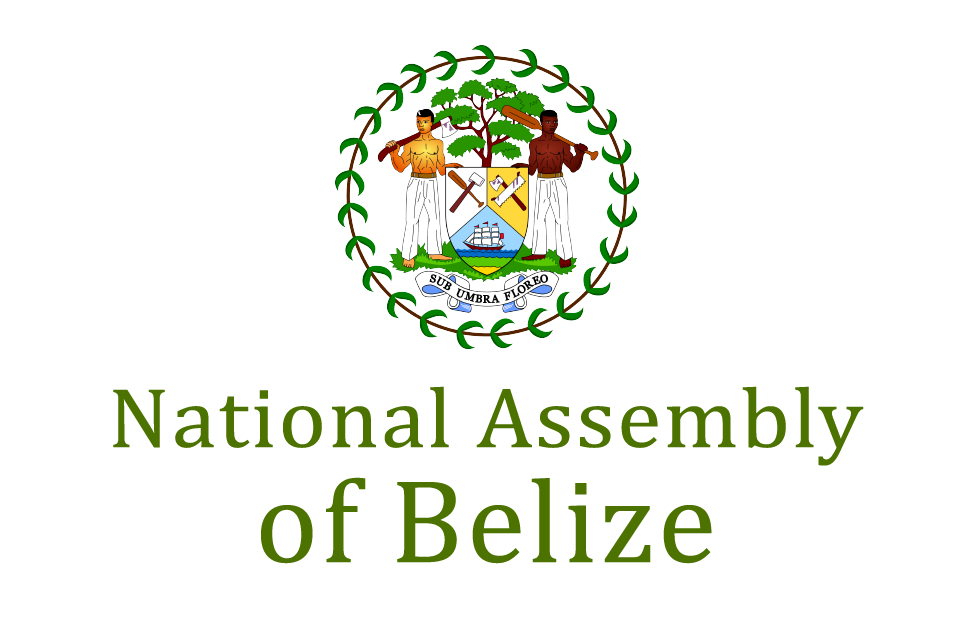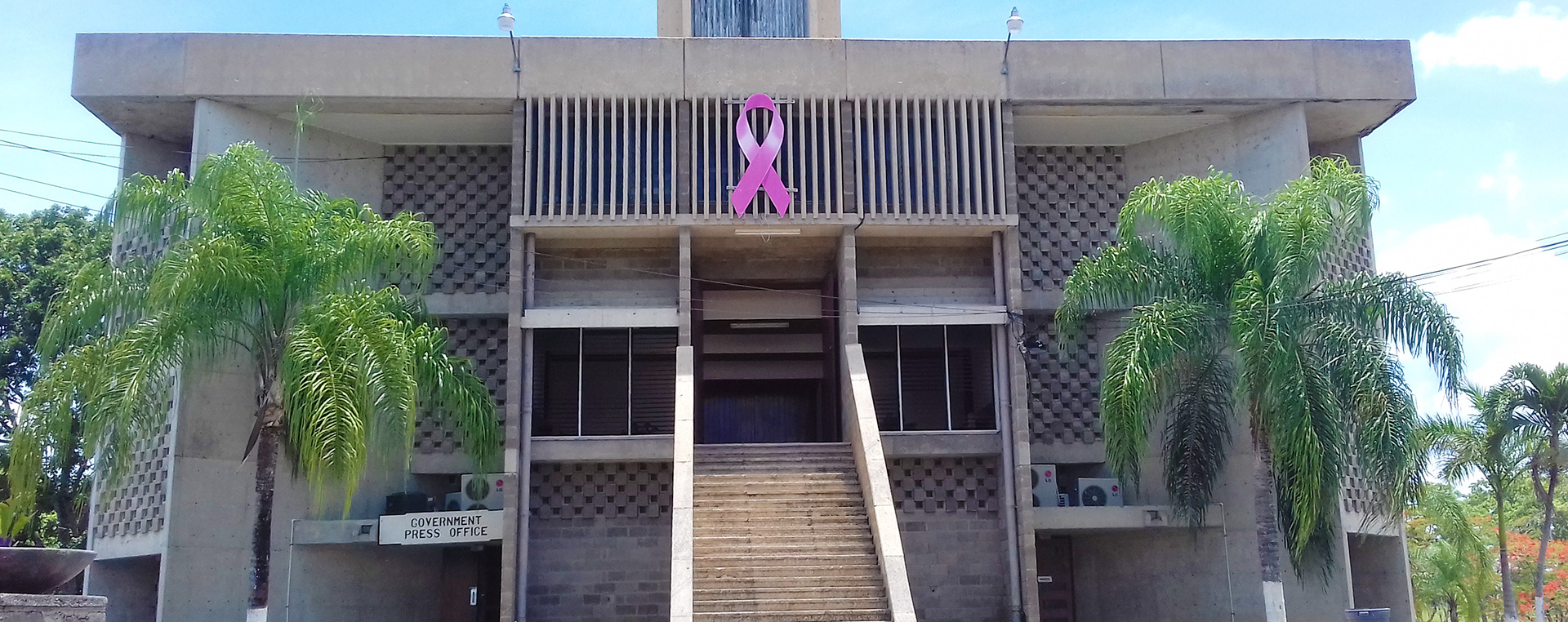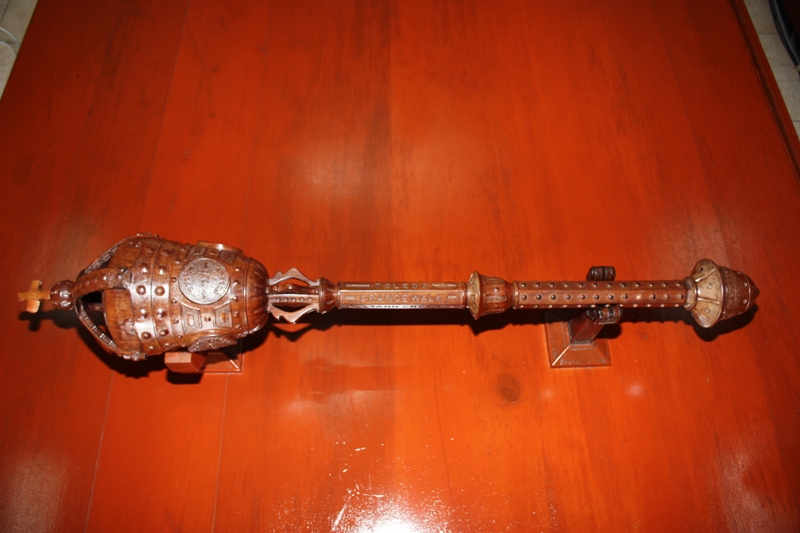Mace of the National Assembly
The Mace of the National Assembly of Belize is made out of a mahogany, which flourished for many years at the grounds of the Government House in Belize City and was blown down in the hurricane of 1931. It was presented to the Legislative Council on 18 January 1952 by Sir Ronald Garvey. On the Head of the Mace are carved the arms of the Colony and the three principal events of its history: the first Settlement 1638; the Battle of St. George’s Caye 1798 and the formation of the Crown Colony 1871. On the shaft are the names of the 6 districts: Corozal, Orange Walk, Belize, Cayo, Stann Creek and Toledo. The date of the manufacture of the Mace was June 1951, and the names of the craftsmen are: R. N. Downes, Superintendent; L. R. Perera, Carver; and G. P. Gough Turner.
The Mace is carried by the Macebearer who preceeds the Speaker for the opening and adjournment of each Sitting of the House of Representatives. When the House is sitting the, Mace is placed on a rack on the Clerk’s Table with its head pointing towards the Government side which is seated to the right-hand of the Speaker’s Chair. When the House is in Committee of the Whole and when it is suspended for whatever reasons, the Mace is placed on racks below the Clerk’s Table.
Standing Order 6 (2) of the House of Representatives states that the Mace shall be present at all Sittings. The House of Representatives cannot sit without the Mace because it is the symbol of the dignity and authority of the Speaker. Even though the National Assembly is a bi-cameral legislature, the Senate does not have a Mace, unlike in the Grenada Parliament where each House has a Mace. It is important to note that the symbolism of a Mace is essential in the traditions of parliamentary institutions.


